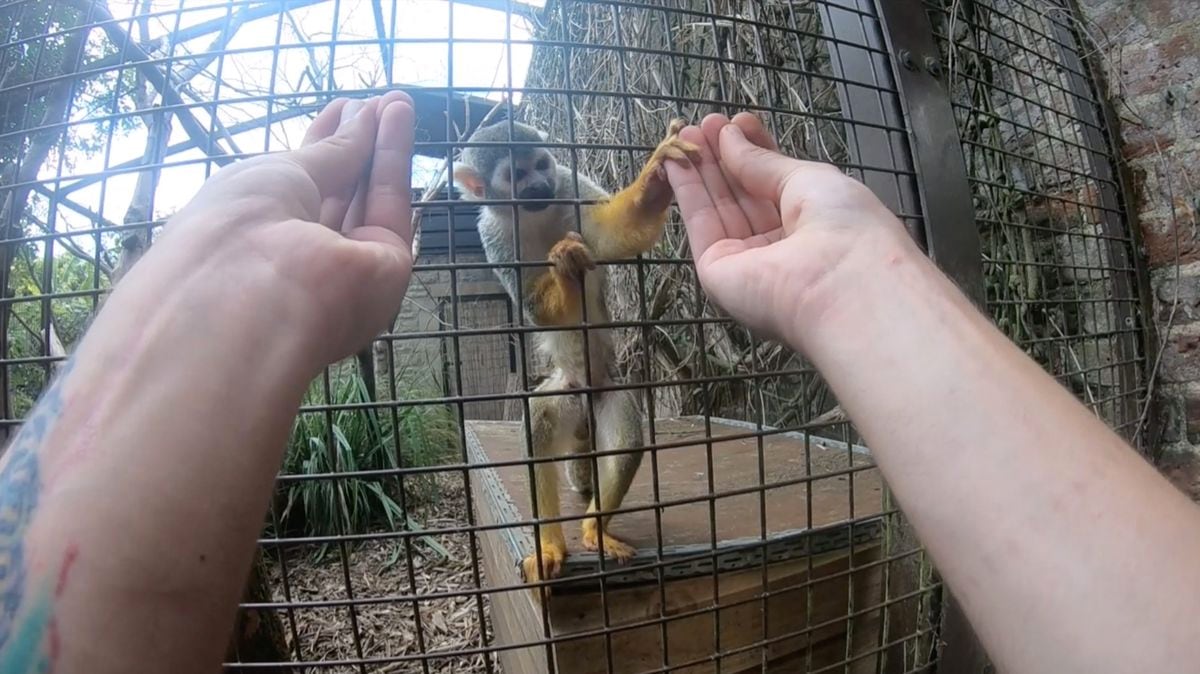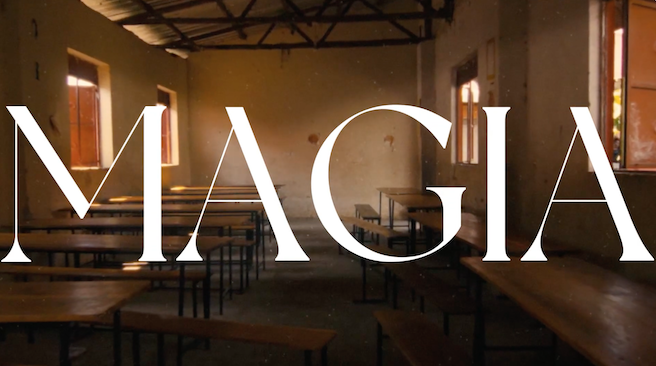Do magic tricks fool monkeys? | Sciences

Barcelona doctor Elias García Pellegrin has managed to combine his two biggest obsessions in his research career: magic and animal perception. According to him, the division between arts and sciences does not make much sense. Artists seek to explore the human condition, just as psychologists and biologists do, with the difference that the latter use the experimental method…
Subscribe to continue reading
Read without limits
Barcelona doctor Elias García Pellegrin has managed to combine his two biggest obsessions in his research career: magic and animal perception. According to him, the division between arts and sciences does not make much sense. Artists seek to explore the human condition, just as psychologists and biologists do, with the difference that the latter use the empirical method.
Specifically, magicians need to understand human perception and attention to trick their audience. His magic tricks can give us a lot of information about our consciousness and how we perceive reality. García Pellegrin is currently a Professor of Animal Behavior at the National University of Singapore and is interested in using magic to understand how other animals see the world.
posted recently Curious study, which he conducted during his PhD at the University of Cambridge, providing evidence that monkeys, like us, can also be fooled by magic tricks. Of course, only when they share the motor skills demonstrated by the magician, that is, if they can make the same movements as the magician.
For the studio procedure, he performed one of the first tricks any magician learns: the French drop. With the left hand, the magician displays a coin while extending his other outstretched hand, hiding the thumb behind the fingers. However, the human public knows that there are thumbs ready to grab the coin as soon as it is no longer visible. The surprise comes when the magician separates his hands and opens them, leaving the coin in the original.
In this case, García-Pelegrín performed the trick in front of a slightly different audience. His study subjects were 24 monkeys from three different species: eight capuchin monkeys, eight spider monkeys, and eight baboons. Instead of a coin, use a small piece of food. If the monkeys guessed which hand it was in, keep it.
The choice of all three species was not accidental. The Capuchins are known for their high craftsmanship. The physiology of their hand allows them to individually control each finger and make a precise grip between the thumb and forefinger. With such skilled hands, they routinely use stone tools to crack nuts in the wild. In the experiment, capuchins fell into the French launch trap 81% of the time. The hoax had for them an effect similar to that which it produces on a human audience.
Spider monkeys are less adept than capuchins. The rotation of their thumb is limited, but they can still, to some extent, oppose that finger to touch their index finger. On some rare occasions too They have been noticed Using tools in a primitive way. Like the Capuchins, they were 93% deceived.
Finally, clamshells differ from the previous two in that they do not have opposable thumbs and cannot make an accurate grip. They are very small monkeys for their hands I have evolved to allow them to climb vertical trunks. In this vein, they find it best to spread all five fingers evenly to increase surface area, and to dig all their nails in unison. Oddly enough, the magic trick didn’t work for them, because they only chose the hand to aim for the grab 6% of the time.
Thumbs or brains?
It could be that this disparate outcome was not due to differences in the monkeys’ hands, but to other factors such as body size or cognitive ability. For this reason, the researchers invented a new version of the French version that they called “low strengthThe trick is the same, except that a fine fist with the thumb is no longer used, but a fist made with the fist, with the rest of the fingers bent.
In this case, the monkeys fell for the magic trick, as did spider monkeys and capuchin monkeys. The gesture that the magician makes in this trick is certainly familiar to lobsters, as they regularly use it to catch food. The difference between the two tricks is very subtle, but they seem to have radically different effects on the monkey’s brains.
In turn, in an earlier study, García Pellegrin performed the French fall under the watchful eye of an Eurasian jay, who doesn’t even have hands. As with the monkey monkey, The deception did not work. What could be the reason for this? Why do tricks only work when the observer is familiar from experience with the magician’s gestures?
The magic of mirror neurons
The answer can be found in the calls.mirror neuronsNeuroscience has provided a great deal of evidence that the same motor neurons that are activated when we do something also do so when we see another individual performing the same movements.
For example, if we watch a dog eating, the neurons responsible for our jaw movements go into action. but, It is not activated When we see dogs barking, because this verb is not in our motor stock.
Some scientists like Guiacomo Rizzolatti, discoverer of mirror neurons, They suggested That thanks to them we can explain the purpose of other people’s actions. That is, we understand the actions of others when they make our motor neurons resonate. Therefore, it will be difficult for animals to decipher the movements that we cannot make.
Of course, the García-Pelegrín study provides compelling evidence that an individual’s motor skills influence how they perceive and interpret the movements of others. With the French drop trick, ticks didn’t think the magician was holding the coin with his thumb, despite his familiarity with human hands. It is possible that because they did not have this ability, their motor neurons were not activated and so they were not able to interpret movement.
However, these are only hypotheses, because the function of mirror neurons Still subject to debate in the scientific community. There is still much work to be done before we fully understand how animals perceive and process the actions of others. Perhaps science just needs to add a little more magic to its investigations.
You can follow Theme in FacebookAnd Twitter And instagramor register here to receive Weekly newsletter.

“Award-winning zombie scholar. Music practitioner. Food expert. Troublemaker.”


/cloudfront-eu-central-1.images.arcpublishing.com/prisa/AHVYMMDSTZDTDBFNZ3LMFUOKNE.jpg)








